A rockstar follow up article to Top 10 DSLR Video Accessories Part 1, it's time for Part 2! This series is a solid follow up to the previous winning list of Top Reasons to use a DSLR Camera for Video and a must read for the semi-serious up and coming video producer. Part 1 started off with the top must haves, touching on specific lenses, tripods and much more. Here is part 2:
6. Portable LED Lighting
Even though DSLR cameras are much better than conventional camcorders when operating in low light conditions, you definitely still need additional lighting on professional video shoots. A great place to start is with LED lights.

Advances in technology have brought portable LED lighting down in both size and price and there are now some great products on the market. I personally always have two small pocket LED lights to hand on every shoot as they’re great for filling in shadows and making someone stand out when interviewing them.
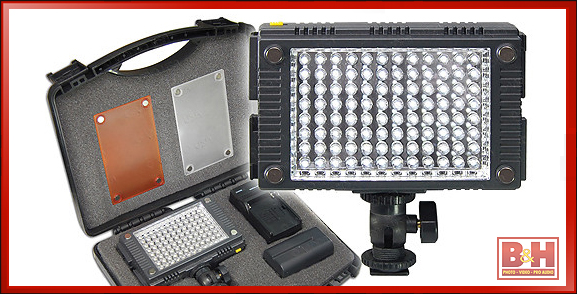
I would then recommend bigger LED panels or more traditional video bulb lights such as Red Heads for lighting scenes
You might also like:
7. Camera Shoulder Rig System
Sometimes when out filming you don’t want to be tied down with a tripod and want (or need) to shoot video hand held. By their nature DSLRs are extremely light so make great handheld cameras. However, because they are designed primarily with photography in mind, the form factor is not like that of a conventional camcorder.
There are no handles, shoulder grooves or hand straps built in, which means stabilisation when shooting video handheld isn’t great. Luckily there are a number of gadgets designed to help keep the camera stabilised when shooting handheld.
The simplest of these is a basic shoulder rig.
These are designed to emulate the form factor of traditional broadcast cameras, and combine a plate that the camera sits on with handles and a pad that sits into your shoulder.
These add points of contact with the camera to your body, resulting in much smoother stable images and increased comfort when shooting over long periods of time. Shoulder rigs come in many shapes and sizes with some offering multiple handles, configurations and even counterbalanced weights over your shoulder to try and maximise both comfort and stability, as shown above.
Getting more advanced there are also smooth/steady cam systems that add both stability and fluidity to the camera, allowing for completely smooth shots when walking or running.
You might also like:
- Shoulder Camera Bag
- Panasonic Batteries
- Canon Batteries
8. Video Viewfinder or External Monitor
DSLR cameras tend to only let you see what you’re shooting through the LCD screen on the back. These LCD screens are great for getting an instant idea of what your footage will look like, but what happens if you’re shooting on a bright day or in a lot of light and can’t actually see the screen?
A viewfinder, shown below on the left, is a crucial accessory because the eyecup design mirrors that of broadcast cameras, blocking out light and also magnifying the screen so you can get a better representation of what is in and out of focus.
Some DSLR cameras also have connectivity for an external LCD monitor, shown above on the right, which can provide you with a much better and bigger representation of what your shots look like.
These can come as wired or wireless solutions, particularly useful if the director of a shoot wants to monitor what you’re shooting, or if you don’t have direct access to the camera, e.g. if it is on a high tripod or camera crane.
You might also like:
9. Lens Filters
The beauty of using a photography camera for video work is that there are a vast range of filters already on the market.
Designed initially for photographic use these work just the same when shooting video, and either screw directly onto the lens or can be held just in front using a matte box. One major complaint about using DSLRs for video work is that they don’t have any inbuilt ND filters like traditional broadcast cameras do.
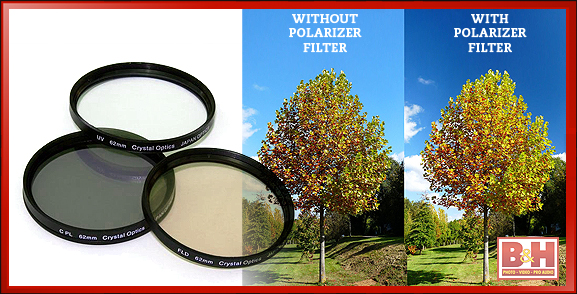
 A neutral density filter (ND) acts like a pair of sunglasses for the camera, dimming the light, which assists you so you can shoot well exposed video in bright conditions. For a DSLR you can either buy individual strength filters or a variable filter, which can be twisted to produce more or less ND. Broadcast cameras only tend to have a wheel with 3 additional ND settings on, so in the end you actually have more options with a DSLR!
A neutral density filter (ND) acts like a pair of sunglasses for the camera, dimming the light, which assists you so you can shoot well exposed video in bright conditions. For a DSLR you can either buy individual strength filters or a variable filter, which can be twisted to produce more or less ND. Broadcast cameras only tend to have a wheel with 3 additional ND settings on, so in the end you actually have more options with a DSLR!
Another great filter to have is a circular polarizer lens filter.
Designed to filter out the polarised component of sunlight, it can darken the sky, remove reflections from water and glass and also enhance colour saturation. It is only really effective when facing 90 degrees from the sun and can also vignette slightly when used with very wide angle lenses, however it can produce stunning effects which are extremely hard to replicate in post-production.
10. Camera Intervalometer
Timelapse photography is a technique made extremely easy with DSLR cameras, and the results can be stunning. It involves, in a nutshell, taking lots of still images of a scene at set intervals then combining them to make a video in which time appears sped up. In a previous article here I’ve explained the technique in much more detail and listed some advantages it can bring to your corporate video productions: Using Time-lapses for Corporate Video Marketing.
For timelapse to work best, the interval in between your pictures should be precisely the same. A great little gadget designed exactly for this purpose is called an intervalometer.
This handy device plugs into the camera and gives you full control over how far apart you want each interval, and for how long you want the camera to take photos. Once you’ve dialled in your desired settings it automatically takes each individual frame accurately and effortlessly, leaving you free to grab a coffee!
What Other Video Production Gear is There?
For video production, different budgets fit different needs. While it’s true more money will lead to a higher quality product, costs have come down dramatically over the past decade. In fact, prices have dropped so much that you can now shoot a professional video on a very low budget – click below to keep reading:

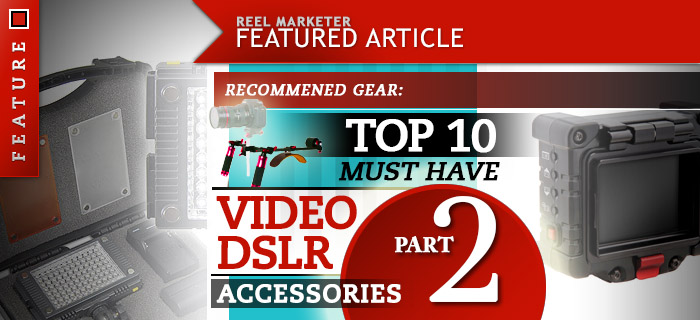
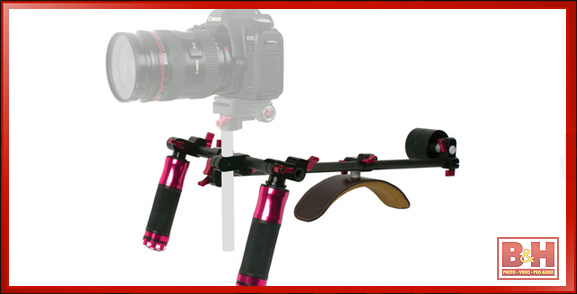
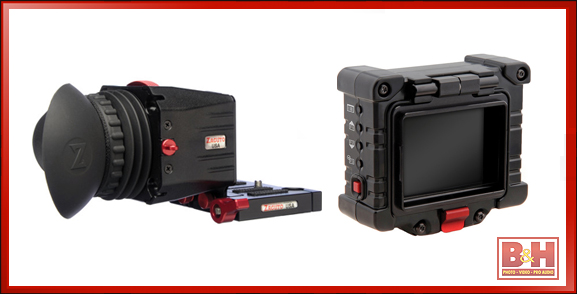
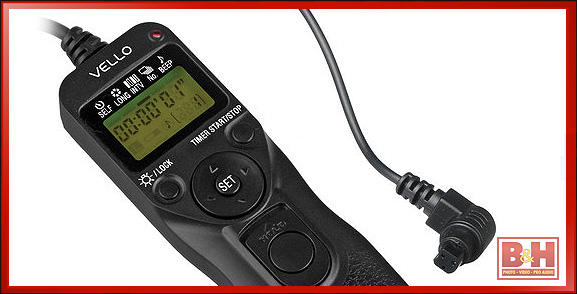
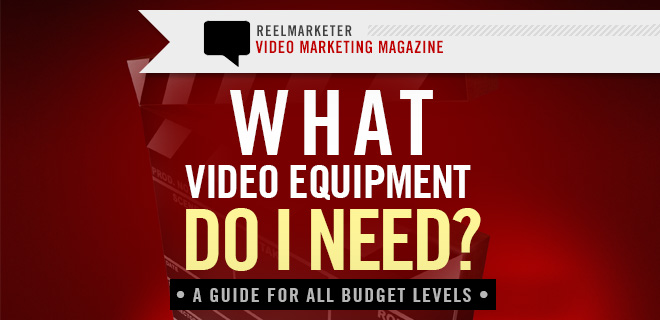




Smart top 10 list Jon, though I think your arrangement is a little bit off, no offence!
The best piece of kit there is bar none is a very good tripod – it out lasts cameras, it works for stills and video, and adds a degree of professionalism that a lower end tripods and productions can’t touch. Great lists, but Manfrotto sticks should be the #1 on the first page.
Second to the tripod are LED lights – a cold/hot shoe mounted LED light on any camera will improve the shooting situation drastically for ENG type work. Sorry, just a couple things I think needed rearranging! I’ve signed up for the Newsletter so I’ll be the first to hear about when you published your article on proper lighting!
BTW, which brand of LED light do you use?
I can recommend the Rode VMP as a DSLR top mic.
Also, I wonder if some on this list are accessories or actually ‘essentials’?
Don’t quite see how lenses can be seen as an accessory? Or memory cards? Surely they are essential!
Things like external mics, LED lights and rigs are accessories for me.
Cheers,
Andrew.